You will find exciting types of citrus fruits in our citrus fruit overview. We also introduce you to a few special citrus fruit hybrids. For example, have you ever heard of a lemon with tentacles or caviar made from lime?
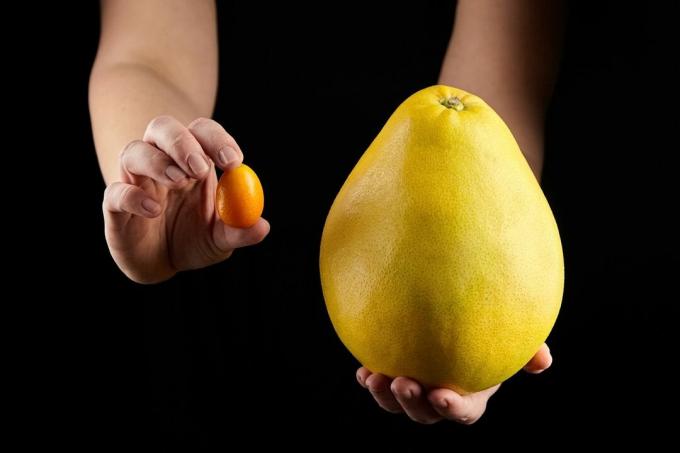
Exotic citrus fruits have become an integral part of our kitchens. They are full of vitamin C, taste fresh, sometimes sour and can be used in an incredible variety of ways in the kitchen. Citrus plants (Citrus) are a genus of plants from the diamond family (Rutaceae). They come from the tropical and subtropical southeast of Asia and their fruits are often grouped under the collective term citrus.
contents
- Cedro: The royal lemon
- Buddha's hand: a golden feature from Asia
- Amalfi lemons: The big lemons from Italy
- Pomelo: the healthy tropical fruit
- Tangelo ‘Minneola’: The orange hybrid
- Persian lime: The easy-care one
- Kaffir lime: the wrinkled version
- Caviar lime: colorful fingers from Australia
- Pursha lime: The Roman
- Real lime: the classic cocktail
- Rangpur Limette: The Orange
- Limequat: The very little one
- Lumie: The sweet lime
- Amanatsu: The Japanese rarity
- Jaffa Orange: The Seedless
The best-known representatives of the citrus family are probably lemons (Citrus x limon), Limes (Citrus × aurantiifolia), Oranges (Citrus x sinensis), Clementines (Citrus x clementina) or mandarins (Citrus reticulata). In addition to these well-known species, citrus fruits have a lot more to offer. In fact, there are so many variations that it can be difficult to keep track of all of the citrus fruits. Did you know, for example, that not all types of lime are green and round? Or that the special lemon variety Buddha's fist has tentacles? In fact, many of these special citrus fruits can even be grown here, despite their spectacular appearance. Of course, most citrus fruits are only in good hands in the bucket culture, as they prefer warm temperatures. If you look at the plants similar to the well-known ones Lemon tree repotted regularly and also gives them the necessary care, nothing stands in the way of growing the exotic citrus fruits.
Tip: Why are there so many different citrus fruits? Anyone who has taken a closer look at the various citrus fruits and their numerous types will quickly ask why the citrus fruit genus is so diverse. In fact, the citrus plants form what is known as a "super-species": while it normally does not is possible to freely cross species with each other, the different citrus fruits like to hybridize together. In the course of time there were always accidental crossings in nature, but also deliberate crossings by humans. As a result, there has been enormous diversity over time - but the relationships are not always very clear.
Cedro: The royal lemon
the Citron Lemon (Citrus medica) is also called Cedro in Italian and is one of the queens among the citrus fruits. The reason for this is the intense aroma and the fresh scent of the lemons, which are rather rare in the supermarket. The peculiarity of this lemon fruit lies in its thick skin, which makes up a large part of the fruit, which can weigh up to four kilos. As the name suggests, it is used to make lemon peel, which you probably know from Christmas cookies. Originally this type of lemon probably comes from Southeast Asia, but it was introduced to southern Europe as early as 70 AD. Cedro is now valued all over the world, because like ordinary lemon varieties, it can also be planted in a tub without any problems.

Buddha's hand: a golden feature from Asia
If you are looking for a special lemon, you cannot ignore the lemon variety of Buddha's hand: The Buddha's hand lemon (Citrus medica var. sarcodactylis) belongs to the genus of lemon (Citrus medica) and can be counted among the old citrus species. This particular lemon is believed to have its origins in eastern and southeastern Asia today because of its strange appearance and its aromatic skin as a potted plant worldwide held. Buddha's fist owes its name to its fruit attachments, which consist of several arms that develop into characteristic fingers. The unusual appearance of the plant is due to the fact that the carpels of the citrus plant not completely fused - each finger goes to an ovule in the flower return. These can grow in different ways: sometimes their "fingers" are outstretched, sometimes they look more like a fist. No fruit looks identical. Fortunately, processing the fruits of the Buddha's hand, which can weigh up to four kilograms, is not that difficult: Since the fruit mainly has a lot of peel and little If it contains fruit pulp or juice, the Buddha's hand is mainly used in recipes because of its aromatic and not at all bitter-tasting peel peel used.
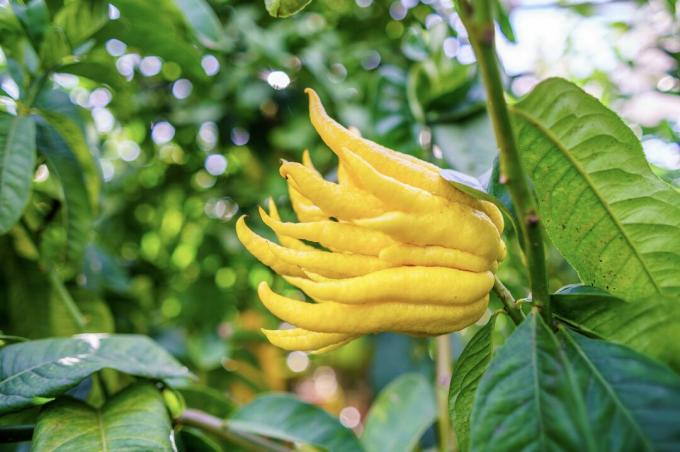
Amalfi lemons: The big lemons from Italy
The Amalfi Lemon (Citrus limon ‘Sfusato Amalfitano’) is one of the tastiest citrus fruits in the world. The lemon species from the Amalfi Coast is notable for its slightly wrinkled fruits, which are about double or They are three times the size of commercially available lemons, mainly due to their aroma: Fresh and intense, but relatively low in acid. In their homeland, Amalfi lemons are primarily used to make limoncello, a traditional lemon liqueur, because of their special taste. But the lemon trees are also visually eye-catching: when the Amalfi lemon is in season, many sections of the Amalfi coast are transformed into a veritable sea of lemon groves with golden-yellow fruits. The Amalfi lemon also cuts a fine figure with us as a potted plant.
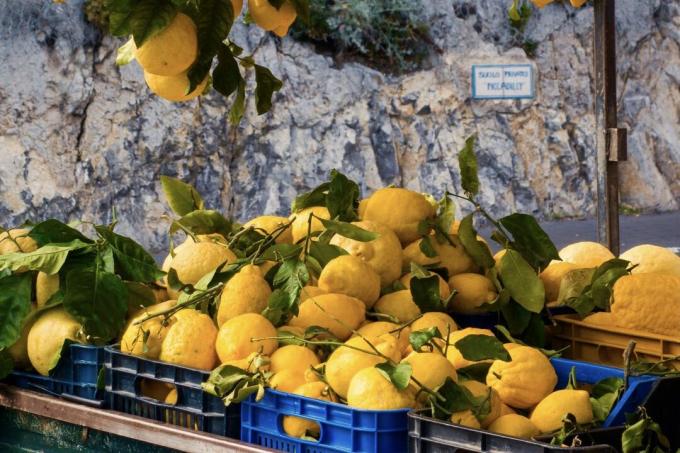
Pomelo: the healthy tropical fruit
With their mild taste, pomelos (Citrus maxima) already found many lovers. In fact, the pomelos are citrus fruits, which are known as grapefruit varieties (Citrus maxima) are to be assigned. The fruits are a breed from the cross of the grapefruit and the grapefruit (Citrus paradisi). Thanks to this crossbreeding, the fruits are less bitter than grapefruit - when eating pomelos, pomelos are much more popular than the bitter grapefruit. At the same time, the pomelos are among the citrus plant species Fruits with a lot of vitamin C. and are therefore particularly good for the immune system. Nowadays you can find pomelos in almost every well-stocked fruit counter. Did you also know that you can also grow the delicious citrus fruit at home? A guide to peeling and Eating pomelos can be found in this article, by the way.

Tangelo ‘Minneola’: The orange hybrid
The tangelo ‘Minneola’ is definitely one of the rare lemon fruits that only few have known so far (Citrus reticula x Citrus paradisi). The striking orange citrus fruit is a cross between the grapefruit variety ‘Ducan’ and the tangerine ‘Dancy’. The crossing of citrus fruits resulted in a relatively tall citrus plant that bears deep orange fruits. The ‘Minneola’ not only convinces with its appearance, but also with its taste: the juicy citrus fruit has a intense aroma that is characterized by a good sweetness with a slightly tart acidity, which the tangelos also when grown in pots to develop.

Persian lime: The easy-care one
The long leaf citrus fruit, the Persian lime (Citrus latifolia), is also called Tahitian lime. It is a lot more undemanding than the real lime (Citrus × aurantiifolia) and is therefore one of the types of lime that can also be grown well in Germany. The lime tree has less high demands on light and warmth and therefore survives our cold, dark winter a lot easier. In terms of taste, the Persian lime is in no way inferior to the real lime. The only difference: the fruits of this lime variety are not round, but oval.

Kaffir lime: the wrinkled version
One or the other may have stumbled upon kaffir lime leaves as an ingredient while reading Far Eastern recipes. the Kaffir lime (Citrus hystrix), also called kaffir lime, is low in juice but very aromatic. However, this lime variety is not really nice to look at. The skin of the fruit is wrinkled and has dents. The kaffir lime makes up for its special appearance with its intense aroma. The fruits and especially the leaves are highly valued in Asian cuisine, for example in Thai curries. Those who like to cook with kaffir lime leaves can also cultivate the exotic citrus fruit in our pots.

Caviar lime: colorful fingers from Australia
Lime caviar is a luxurious specialty and does not come from fish, but from the fruits of the Caviar lime (Microcitrus australasica). This exotic fruit is closely related to the citrus family, but strictly speaking it is not a lime type, but a Micorcitrus type. Because of their origin, the rare citrus fruits are also called Australian finger limes. In the elongated fruits of the finger lime there are small, round pearls that really look like caviar and have an intense lime aroma. Caviar limes have an incredible variety of varieties: the flesh and skin of the finger limes can be red, green, pink or yellow. Caviar limes need a protected, warm and full sun location and tolerate no or only light frost. An extension in the bucket is possible, but ideally a light winter garden should be available, so that the plant can still spend the autumn bright and warm before it goes into hibernation will.
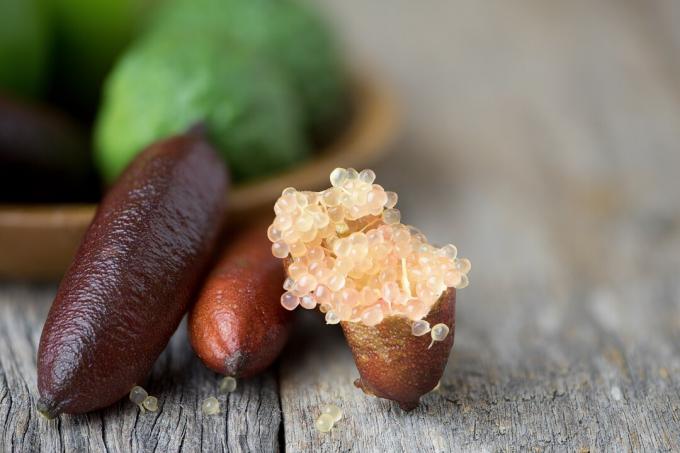
Pursha lime: The Roman
The Pursha lime (Citrus × limon ‘Pursha’) is also called Roman lime or sweet lime. In English it is called "mediterranean sweet lemon". But don't be fooled by its name: the juice of this type of lime is still not really sweet. Since the plants of the Pursha lime stay rather small and form a beautiful, round crown, they seem made for growing in pots and can also be grown here. From spring onwards, the lime tree also bears wonderfully fragrant white flowers. The Pursha lime is rich in juice and essential oils are extracted from its peel. This type of lime originally comes from Asia, but today it is mainly grown in southern Italy - from Sicily to Rome. Speaking of Italy: The Italian liqueur Limoncello is also often made from the peel of the aromatic Roman lime. In Germany, by the way, the Pursha lime can be cultivated as a potted plant just like a classic lime tree.

tip: In order for citrus plants to actually bear aromatic fruits, they need sufficient nutrients. The application of a liquid fertilizer is particularly easy and effective for potted plants. Our Plantura Organic citrus and mediteranean fertilizers is suitable for all common citrus plants and contains all the necessary nutrients. Our organic liquid fertilizer is simply administered via the irrigation water and also ensures stronger roots and resilient plants.
Real lime: the classic cocktail
When you think of limes, the first thing that comes to mind is the “classic” round green lime. This is the so-called Real lime (Citrus aurantifolia) or Mexican lime. This is often used for fruity-sour cocktail creations such as the caipirinha. Originally at home in the subtropics, the lime can also be grown in pots here. However, the real lime needs a lot of light and warmth, so cultivating these citrus fruits requires a bit of tact and expert knowledge.
Tip: Limes are only evergreen in the tropics. This is due to the temperature: While it is almost the same warm all year round in the tropics, only the temperatures fluctuate from night to day, our plants experience a periodic change from cold to warm Season. Because the lime plant is particularly hungry for light, its leaves turn yellow in winter as soon as it gets darker overall in winter.

Rangpur Limette: The Orange
Where does the Rangpur lime come from (Citrus × limonia) exactly is unclear. It is very likely a cross between lemon (Citrus x limon) and tangerine (Citrus reticulata). The name giver for this lime is definitely the Rangpur region in Bangladesh. The fruits of the Rangpur lime change color from green to yellow-orange, which is why it is also known as "orange lime". The lime even has orange pulp, which tastes sweet at first, but then refreshingly bitter. Despite its unusual appearance, the Rangpur lime is by the way not a diva - it can be planted in Germany like the real lime.
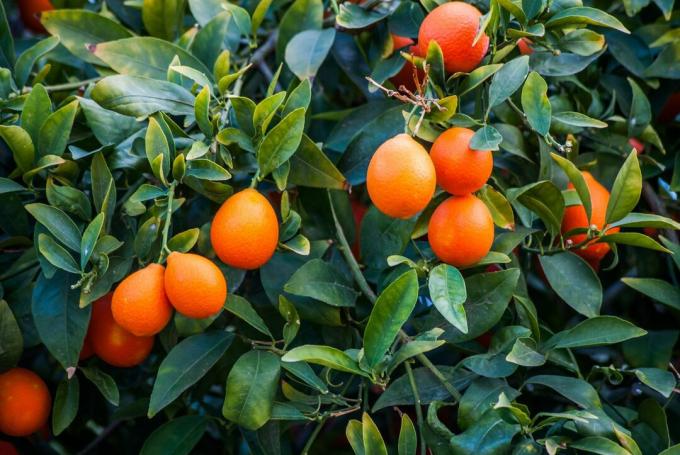
Tip: Citrus plants do not tolerate frequent repotting very well and also place special demands on their soil and nutrient supply. We'll explain in detail how you can Repot the lemons - You can do the same for all other citrus plants mentioned here.
Limequat: The very little one
Limequats (Citrus floridana) are a cross of the Real lime and the Kumquat (Fortunella margarita). Kumquats are also called dwarf oranges because they are particularly small - officially, however, they do not belong to the orange species. The limequats have inherited their small size from the kumquats - the fruits are only two to four centimeters in diameter - and look like tiny miniature limes. As with the kumquat, the whole fruit can be eaten, both the skin and the stone. The flesh has an intense, very sour taste and the peel has the penetrating taste of lime. Especially because limequats are much more resistant to the cold than their mother the lime, we can also grow the lime tree.
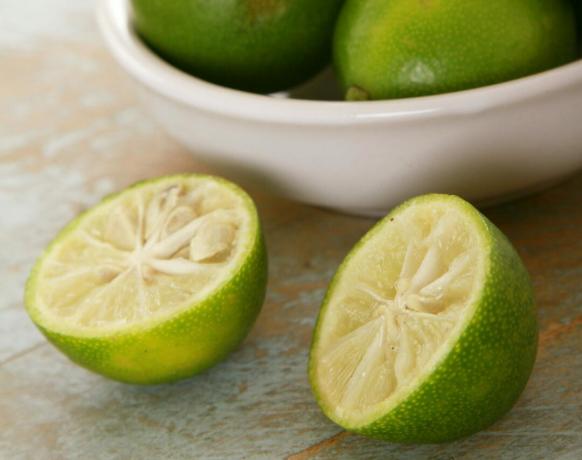
Lumie: The sweet lime
Among the various citrus fruits, the Lumie (Citrus Lumia) to the varieties that are not yet very well known in this country. In fact, the sweet lime has a lot to offer: It has a mild, lime-like taste, with a lot of sweetness and only a little acidity. Thanks to their fresh, sweet taste, citrus fruits are often used in juice or as a component in cocktails. However, the juice can lose its sweetness after a few minutes in the air, so that it is only suitable for direct consumption. If you want to experience the delicate taste of the Lumie fresh, you can also cultivate the citrus fruit here as a pot plant.
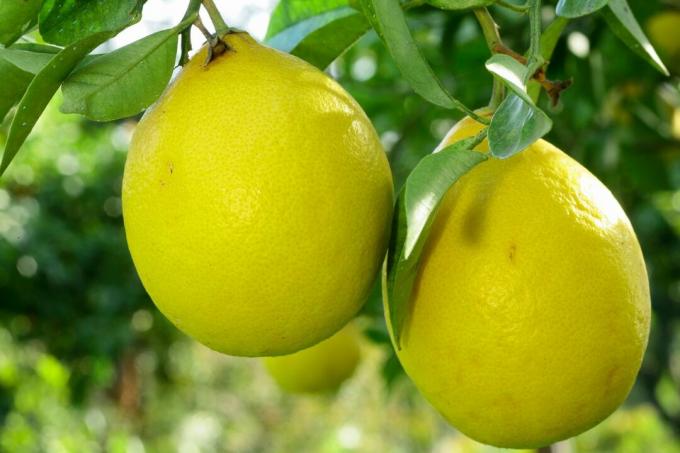
Amanatsu: The Japanese rarity
One of the rare citrus fruits is the Amanatsu (Citrus natsudaidai): The hybrid of grapefruit and tangerine is only grown commercially in southern Japan. It is loved for its versatile, intense aroma, which is bitter, sweet and sour at the same time. In addition, the rare citrus fruit is easy to peel, making it suitable for direct consumption. In our area, the plant is so far only known to enthusiasts. In fact, the Amanatsu is considered to be more robust than many common citrus fruits, so that we can also grow it.

Jaffa Orange: The Seedless
Anyone looking for a special kind of orange (Citrus x sinensis) Is on the lookout, should take a closer look at the Jaffa orange - also known as Shamouti orange. The orange variety is grown for its almost seedless fruit and its sweet taste and is considered an excellent eating orange. In fact, the majority of the eating oranges sold in Germany are Jaffa oranges, as the seedless fruit is considered particularly tasty. The Jaffa orange comes from the Tel Aviv district of the same name in Jerusalem and is itself the namesake of the well-known biscuit biscuit “Jaffa Cake”. The freshly squeezed juice of the Jaffa orange is also an aromatic pleasure. However, juice made from Jaffa oranges is not suitable for storage because it becomes bitter after a while. If you want to enjoy the taste of the Jaffa orange fresh from the tree, you can cultivate the plant in a pot like an ordinary orange tree.
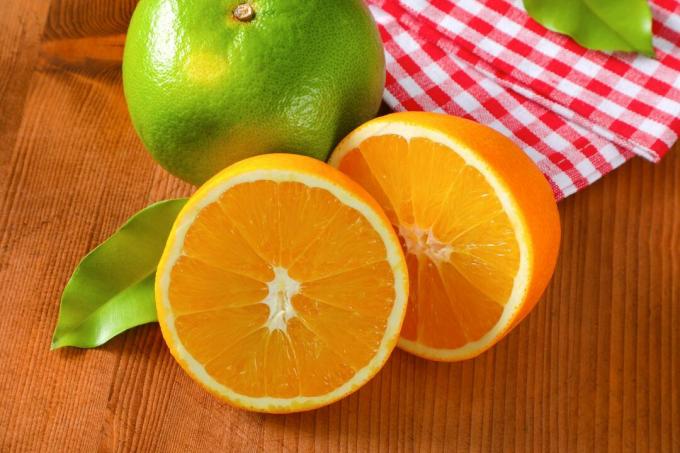
Now, if we've whetted you in the mood for exotic fruits, you'll find more information about a few here Fruits you sure have never heard of.
If you want to support your immune system, you will also find 15 with us Fruits with a particularly high amount of vitamin C..



